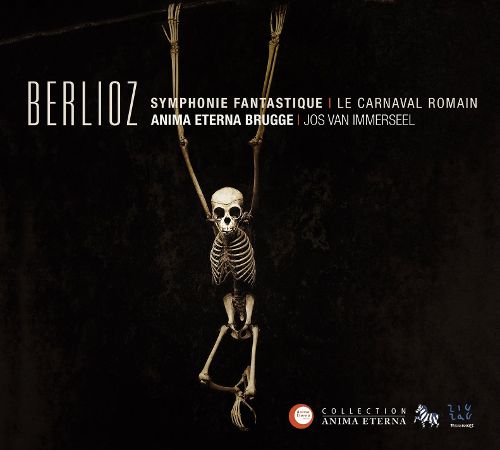Berlioz Symphonie Fantastique
A pared-down approach serves to concentrate Berlioz’s power
View record and artist detailsRecord and Artist Details
Composer or Director: Hector Berlioz
Genre:
Orchestral
Label: Zig-Zag Territoires
Magazine Review Date: 5/2010
Media Format: CD or Download
Media Runtime: 0
Mastering:
Stereo
Catalogue Number: ZZT100101

Tracks:
| Composition | Artist Credit |
|---|---|
| Symphonie fantastique |
Hector Berlioz, Composer
Anima Eterna Orchestra Hector Berlioz, Composer Jos van Immerseel, Conductor |
Author: Mike Ashman
This new project continues the work of rediscovering the “original” Symphonie fantastique started by the records made since 1988 by Roger Norrington, John Eliot Gardiner and Marc Minkowski. The Bruges ensemble’s choice of old instruments here includes not only the earliest form of “modern” double bass, “omnitonic” clarinets, pre-Boehm-system flutes, valved horns with crooks, ophicleides and an Érard harp, but also timpani with a central screw played with the sticks Berlioz specifically called for and, radically, two Érard pianos to provide low harmonics in imitation of bells for the “Songe d’une nuit du Sabbat”. Jos van Immerseel, although noting that Berlioz in different moods called for instrumental forces for this work ranging from 93 to 220 (including 60 strings, 30 pianos and 30 harps), has opted for the relatively chamber-size forces (45-50) with which the composer was so satisfied in Germany. And he has refreshingly “forgotten” the hectic virtuosity, the pumping up of every animato, which inform many a modern concert-hall performance.
Not that this deliberate lack of applied adrenalin makes the performances any less exciting. The reading of the Carnaval romain is even more radical than the symphony in its deft, unforced lightness, the work emerging as a true companion piece (tribute and parody) to the descriptive stage music of Italian Ottocento composers. The symphony itself is never rushed or grabbed at by van Immerseel and his players. The reduced size of the band and the clean, never over-reverberant acoustic of their recording venue plunges us without neat corners or commas straight into Berlioz’s mixture of Parisian street wind band and later Beethovenian recitative and scene-setting. Aptly for an orchestra that has just recorded a Beethoven cycle, the shadow of the Pastoral looms large in van Immerseel’s nearly 16-minute “Scène aux champs”, this timing more accounted for by just observation of the many pause markings than any expressive, romantic slowing. The placing and sound of the timpani are particularly well judged here.
Elsewhere the whole kit of an old-instrument Fantastique – pungent brass timbres, shrieking clarinets, scary “bells” (the pianos) and death-march timpani – makes its mark. For its combination of unique orchestral size and recording quality, and overall Werktreu-ness, this new performance sits easily alongside, maybe even slightly ahead of, the other authentic contenders.
Discover the world's largest classical music catalogue with Presto Music.

Gramophone Digital Club
- Digital Edition
- Digital Archive
- Reviews Database
- Full website access
From £8.75 / month
Subscribe
Gramophone Full Club
- Print Edition
- Digital Edition
- Digital Archive
- Reviews Database
- Full website access
From £11.00 / month
Subscribe
If you are a library, university or other organisation that would be interested in an institutional subscription to Gramophone please click here for further information.




